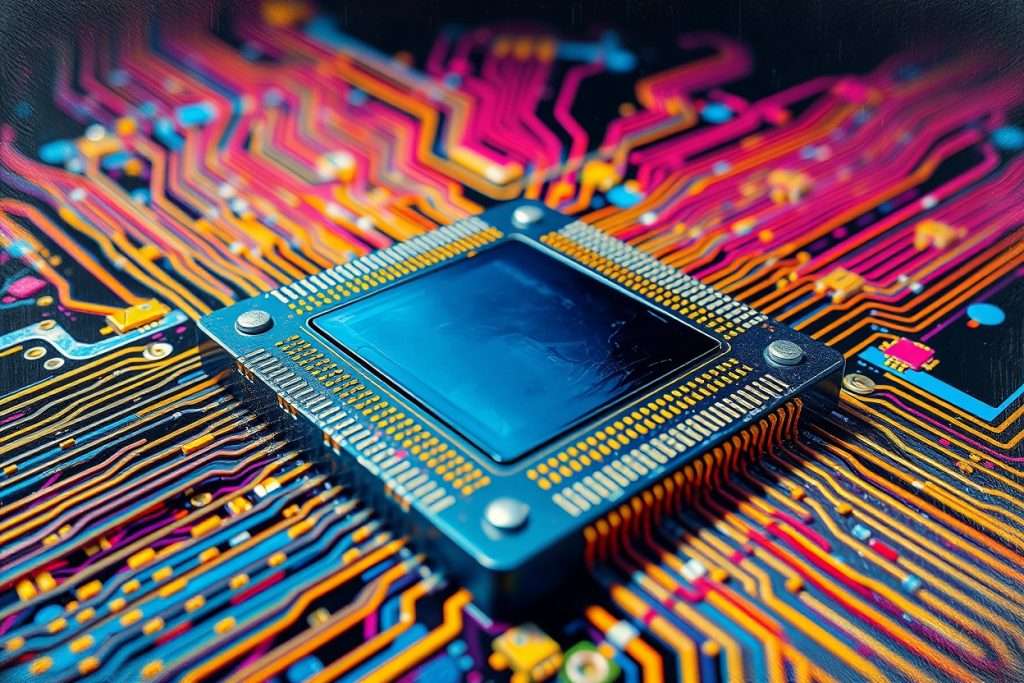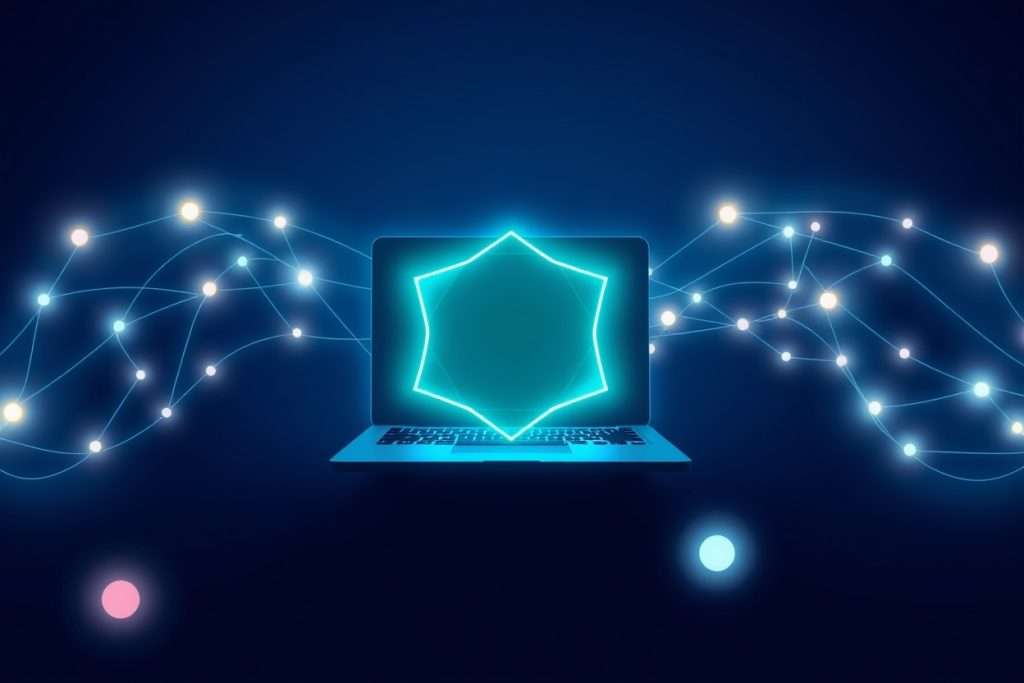How quantum computing will reshape cybersecurity and the internet

The world is on the cusp of a technological upward spiral, one that promises to reshape the very foundations of the internet as we know it.
At the heart of this transformation are the groundbreaking advancements in quantum computing, spearheaded by tech giants Microsoft and Google. Their latest quantum chips, Microsoft’s Majorana 1 and Google’s Willow, represent a huge step ahead with the potential to solve problems currently intractable for even the most powerful supercomputers. However, this immense power comes with a caveat, a double-edged sword that could simultaneously revolutionize and destabilize our digital world.
Key Takeaways
- Quantum computing, using qubits instead of bits, offers vastly increased computational power for specific tasks.
- Microsoft’s Majorana 1 and Google’s Willow chips represent significant advancements toward practical quantum computing.
- Quantum computers threaten current encryption standards, necessitating the development of post-quantum cryptography.
- Quantum technology also offers enhanced security solutions like Quantum Key Distribution (QKD).
- The broader impact includes faster data transfers, a reshaped internet infrastructure, and new possibilities in cloud computing.
What a quantum computer actually is?
Before diving into the specifics of recent breakthroughs, it’s important to understand what a quantum computer actually is. Unlike traditional computers that store information as bits representing 0 or 1, quantum computers use qubits. Think of a qubit like a light switch that can be both on and off at the same time, thanks to a concept called superposition.
This, along with other quantum phenomena like entanglement, allows quantum computers to explore a vast number of possibilities simultaneously. This capability makes them potentially much faster than classical computers for certain types of problems, particularly those involving optimization, simulation, and cryptography. This is relevant because the very foundations of internet security, data transfer, and computation could be fundamentally altered.
As individuals and businesses increasingly rely on digital infrastructure for daily operations, the need for robust security measures has never been greater. While quantum computing promises unprecedented advancements, it also poses a significant threat to current encryption standards. In this evolving landscape, many users are proactively seeking ways to enhance their online security. One common step is to download a VPN, which encrypts internet traffic and masks IP addresses, providing an additional layer of protection against potential threats.
Recent breakthroughs: Microsoft’s Majorana 1 and Google’s Willow
Microsoft’s Majorana 1 chip, unveiled in February 2025, is a pioneering creation based on a novel “Topological Core” architecture. This chip leverages “topoconductors,” a new class of materials that enable the creation and control of Majorana particles. These particles are key to producing “topological qubits,” which are inherently more stable and scalable than traditional qubits. As Chetan Nayak, Microsoft Technical Fellow, stated, “We took a step back and said, ‘OK, let’s invent the transistor for the quantum age. What properties does it need to have?‘”. This design philosophy has led to a chip that promises to scale up to one million qubits, a crucial threshold for solving real-world, industrial-scale problems.
Google’s Willow chip, on the other hand, has demonstrated the ability to perform a computation in under five minutes that would take classical supercomputers an astonishing 10 septillion years – a number that exceeds the age of the universe. This achievement shows Google’s focus on achieving “quantum supremacy,” where quantum computers outperform classical systems in specific tasks.
The Cybersecurity Conundrum: a looming threat

The power of quantum computing poses a significant threat to current cybersecurity frameworks. Traditional encryption methods, such as RSA and ECC, rely on the computational difficulty of factoring large prime numbers or solving discrete logarithms. Quantum algorithms, particularly Shor’s algorithm, can efficiently solve these problems, rendering current encryption methods obsolete. As an article in Computer Weekly highlights, a classical computer might need trillions of years to crack a 2048-bit RSA key, whereas a quantum computer could potentially achieve this in hours or days.
This vulnerability extends to all forms of secure online communication, financial transactions, and digital identity verification. The “harvest now, decrypt later” strategy, where adversaries collect encrypted data now to decrypt it later with quantum computers, is a growing concern.
Solution: Quantum-resistant defense
The cybersecurity industry is not standing idly by. The development of post-quantum cryptography (PQC) is happening, focusing on algorithms resistant to both classical and quantum attacks. The National Institute of Standards and Technology (NIST) is leading this effort, with several PQC algorithms already in the final stages of evaluation. As Skip Sanzeri notes in a Forbes article, “Organizations will need to use crypto agility for swift adaptation to new cryptographic standards as threats evolve”
However, transitioning to PQC presents significant challenges, including upgrading legacy systems, ensuring compatibility with existing infrastructure, and allocating resources for training and system upgrades.
Quantum-enhanced cybersecurity: A big shift
Paradoxically, quantum computing also offers tools to enhance cybersecurity. Quantum Key Distribution (QKD) uses the principles of quantum mechanics to establish secure communication channels. Any attempt to eavesdrop on these channels alters the quantum state, immediately alerting the communicating parties. Additionally, Quantum Random Number Generation (QRNG) provides truly random sequences, strengthening cryptographic protocols. Quantum machine learning can analyze vast datasets more efficiently, improving anomaly detection and threat identification.
Data Transfers: the quantum speed boost
Quantum computing is also upgrading data transfers through the development of quantum networks. These networks leverage quantum entanglement and superposition, enabling unprecedented speed, security, and efficiency in data transmission. QKD, as mentioned earlier, plays a key role in securing these networks.
Real-world applications are already emerging. China’s Micius quantum satellite has demonstrated secure quantum communication over 1,200 kilometers, and the European Quantum Communication Infrastructure (EuroQCI) aims to establish a secure quantum communication network across Europe by 2027.
The Quantum Internet: a new era of connectivity

The broader implications of quantum computing extend to the very fabric of the internet. The concept of a “quantum internet,” a global network of quantum devices interconnected through quantum entanglement, is gaining traction. This would enable instantaneous and secure communication, eliminating latency issues inherent in traditional networks.
Quantum cloud computing is also emerging, with cloud providers integrating quantum capabilities and offering Quantum-as-a-Service (QaaS). This will allow businesses to access quantum computing power for complex tasks, enhancing cloud-based AI, machine learning, and data analysis.
Challenges and Considerations
Despite the immense potential, several challenges remain. Building a global quantum network requires significant advancements in quantum hardware and software. Quantum systems need specialized environments, including cryogenic cooling and protection from electromagnetic interference. Error correction is crucial to maintain the stability of qubits during data transmission.
The Future: a quantum-powered world?
The advancements in quantum computing by Microsoft and Google are massive steps in the digital landscape, concerning quantum advancements. While the threats to current cybersecurity are real and imminent, the opportunities for enhanced security, faster data transfers, and a more connected world are equally profound.
The double-edged sword of quantum computing demands careful navigation. Governments, businesses, and individuals must proactively prepare for the quantum era, investing in quantum-resistant cryptography, exploring quantum-enhanced security solutions, and embracing the potential of a quantum-powered internet. The race is on, and the stakes are higher than ever. The future is quantum, and it is arriving faster than we think.




